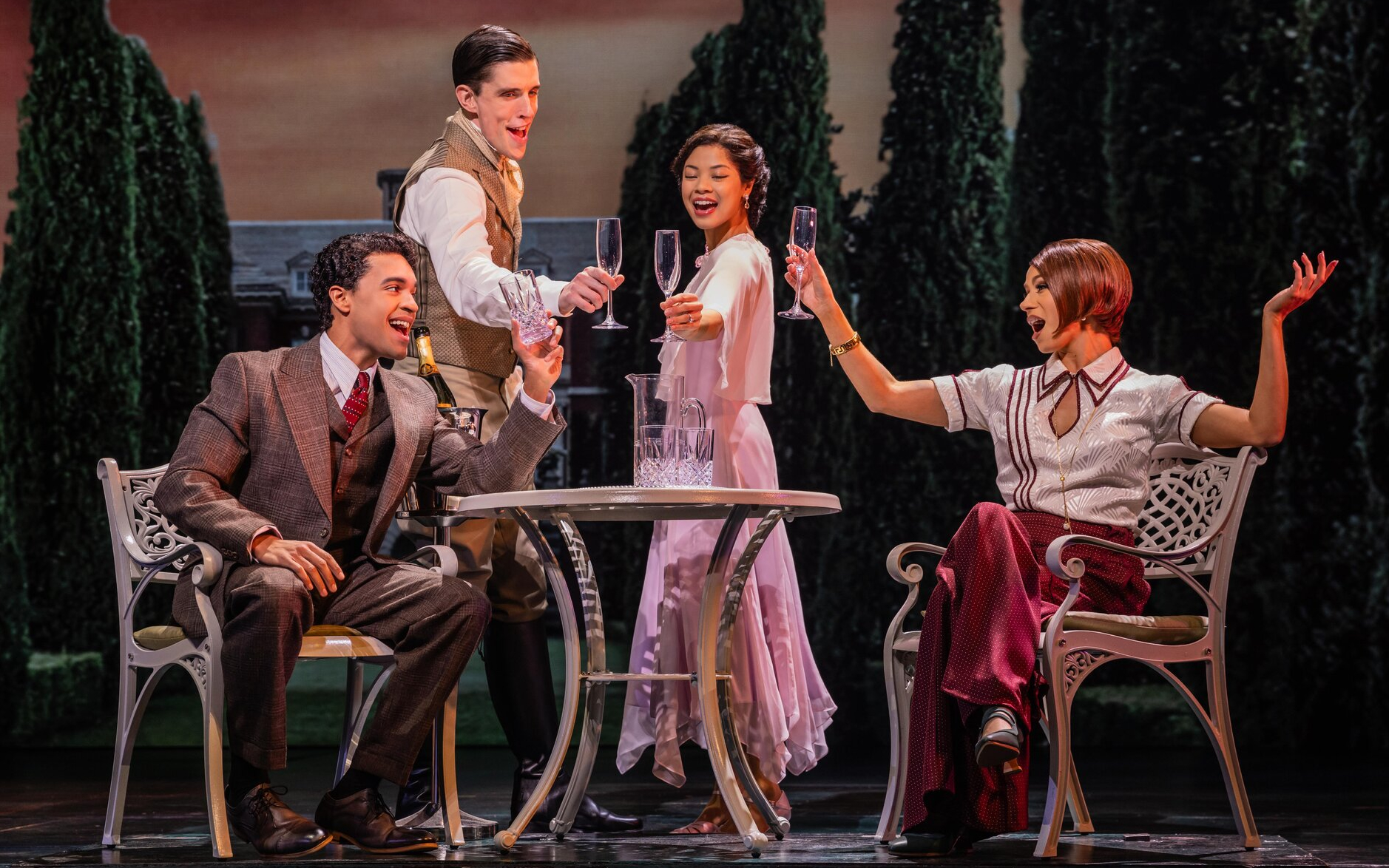THE GREAT GATSBY
(Triggering vs Earning—Part 2)
Based on the novel by F. Scott Fitzgerald
Book by Kait Kerrigan
Music by Jason Howland
Music by Nathan Tyson
Directed by Marc Bruni
Broadway Theatre
Official Website
Reviewed by David Spencer
The Great Gatsby is best described as factory fresh Fitzgerald. It looks Art Deco great, it dances Period Positions great, and it’s slick and shiny enough to distract those who would be distracted from noticing that it’s all packaging. By which I mean that verisimilitude—a true evocation of the story’s 1920 era—is almost completely absent under the surface. Of all things, it reminded me of the mid-late ‘90s television series, Hercules: The Legendary Journeys, which was set in a fantasy version of ancient Greece with no actual anchoring in historical time. The characters spoke to each other in fairly contemporary, idiom-filled colloquial English and the general tone was what I’ll call tongue-in-cheek sincerity.
The world-building of the new musical is similarly divorced from its source material except in general outline. Kait Kerrigan’s libretto is efficient, its dialogue occasionally witty, rarely engagingly funny; but to be fair, it seems to exist as structural support for the score. And the score is a weird hybrid to parse, but I’ll try: Nathan Tysen’s lyrics are the sharpest element of the authorship; they sound as if his style and approach could be transplanted to a more authentic adaptation of the novel…but of necessity, of course, they’re working in tandem with Jason Howland’s score, which has absolutely nothing to do with the roaring ‘20s, save for a little filigree filtering. Which is not to say that a musical’s score perforce must use the vocabulary of the story’s era…there are endless ways to evoke without imitation or replication: For Cabaret, composer John Kander chose to evoke Weimar Germany by channeling Kurt Weill—as an ingredient of Fraulein Schneider’s book numbers, she being very much a Bertolt Brecht kind of character—and very aggressively for the nightclub songs—a direct-line musical reference point that drew you into that world’s atmosphere…while, for Pacific Overtures, Stephen Sondheim used the tonal music of Spanish composer Manuel de Falla as his stand-in paradigm for the atonal sounds of feudal Japan—because de Falla tended to develop simple ideas over long stretches with minimal harmonic development—a Western metaphor for Eastern music, an indirect line that somehow feels direct. But still envelops you in the exotica.
But Mr. Howland’s music seems not to be drawing on anything much except a muse that very deliberately seeks to blend musical theatre pop with music video and money-note chart-busters (of which there are a few too interchangeably generic-sounding many). One might argue that he’s seeking to do his own Hercules-like world-building toward creating a jazz-age New York City apart from time; but he did much the same with his score for Paradise Square, set in NYC during the Civil War, which featured similar filigree filtering. That seems to be his imprimatur. An audience member has to make a similarly very deliberate choice—or pact with the sound—to buy in.
But buy in the audience is unequivocally doing—at least to the degree that they’re grooving with the triggers, many of which are choreographic (Dominique Kelley). Whatever else is true, The Great Gatsby has calculated its visceral pump meticulously. I can’t go as far as accepting that it represents the new normal, but it certainly represents a new normal. And if such is your goal…The Great Gatsby, for good or ill or both, provides a fine blueprint for how to go about doing it.
Triggering vs Earning
(More parts to follow)
